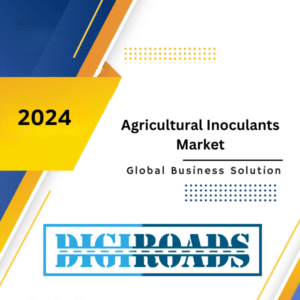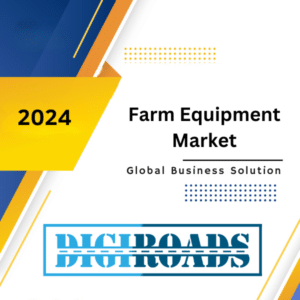Description
Bio-Control Agents Market: Opportunity Analysis and Industry Forecast, 2024-2034
BioControl Agents Market Overview:
The global Biocontrol Agents market is projected to continue its growth trajectory. With a CAGR of more than 10.76% during the forecast period, the market is expected to reach approximately $2.22 billion by 2024. This growth is driven by the increasing awareness of biocontrol agents among consumers and the rising concern over food contamination due to the use of various chemicals.
Looking ahead to 2034, the Biocontrol Agents market is anticipated to see significant expansion, reaching approximately $15.16 billion. This growth is attributed to the continuous demand for biocontrol agents as consumers increasingly prefer eco-friendly and sustainable agricultural practices. Additionally, the tightening regulations on chemical pesticides are expected to further boost the adoption of biocontrol agents in the agricultural sector.
The biocontrol agents market is a significant sector of the agricultural industry, comprising naturally occurring organisms or substances used to control pests, diseases, and weeds in crops. These agents include beneficial insects, microorganisms, and plant extracts that offer effective and environmentally friendly alternatives to chemical pesticides.
Key factors driving the growth of the biocontrol agents market include increasing concerns about the environmental and health impacts of chemical pesticides, as well as the rising demand for organic and sustainable farming practices. Bio-control agents offer precise and targeted pest management, reducing the risk of harm to beneficial organisms and minimizing pesticide residues in food.
Moreover, regulatory support for biocontrol agents, along with advancements in biotechnology and formulation techniques, is fostering market growth. Integrated pest management (IPM) practices, which combine biocontrol agents with cultural, biological, and chemical controls, are becoming increasingly popular.
Geographically, Europe leads the biocontrol agents market, followed by North America, driven by stringent regulations promoting sustainable agriculture. However, regions like Asia Pacific and Latin America are experiencing rapid growth due to increasing adoption of bio-control agents and expanding organic farming practices.
Bio-Control Agents Market – Report Coverage:
The “Bio-Control Agents Market Report – Forecast (2024-2034)” by Digiroads Consulting, covers an in-depth analysis of the following segments in the Agrochemical Market.
| Attribute | Segment |
| By Type: |
|
| By Application Method |
|
| By Formulation |
|
| By Crop Type |
|
| By Mode of Application |
|
| By Location |
|
Recent Developments :
- Product Innovation and Formulation Advancements: Research and development are focused on creating new biocontrol agents with improved efficacy and broader target spectrums. Additionally, advancements in formulation technologies are enhancing shelf life, ease of application, and compatibility with other crop protection products.
- Focus on Automation and Delivery Systems: The integration of automation technologies like bio-spray drones and precision application methods is gaining traction. This improves targeting, reduces waste, and optimizes the use of biocontrol agents.
- Growing Interest in Combination Biocontrols: There’s a rising interest in developing combination biocontrol products that integrate different beneficial organisms or mechanisms of action. This multi-pronged approach aims to enhance efficacy and reduce the risk of resistance development in pests.
- Regulatory Harmonization Efforts: Regulatory bodies in different regions are increasingly collaborating to harmonize regulations for biocontrol agents. This facilitates smoother international trade and market expansion for biocontrol products.
Examples of Recent Developments:
- February 2024: BASF, a major crop protection company, announced the launch of a new biofungicide containing Bacillus amyloliquefaciens for controlling a range of fungal diseases in various crops.
Bio-Control Agents Market: – Dynamics:
Stringent Regulations on Chemical Pesticides: Environmental and health concerns are leading regulatory bodies to impose stricter limitations on chemical pesticides. This creates a crucial opportunity for biocontrol agents as a safer and more eco-friendly alternative for pest management.
- Rise of Organic Farming: The burgeoning popularity of organic farming methods fuels the demand for biocontrol agents. These agents comply with organic certification standards, enabling organic farmers to effectively control pests without resorting to harmful chemicals.
- Growing Consumer Awareness: Consumers are increasingly concerned about the potential health and environmental risks of chemical residues on food. This drives demand for food products grown using sustainable practices, consequently boosting the demand for biocontrol agents.
Shifting Trends and Innovation:
- Focus on Broad-Spectrum Agents: Research and development efforts are directed towards creating biocontrol agents with a broader target spectrum, enabling them to control a wider range of pests. This expands their utility and makes them more attractive to farmers.
- Advancements in Formulation Technologies: Developments in formulation technologies are improving the shelf life, stability, and ease of application of biocontrol agents. This enhances user-friendliness and practicality for farmers integrating these agents into their pest management strategies.
- Precision Agriculture Integration: The integration of biocontrol agents with precision agriculture technologies like drones and targeted application methods is gaining traction. This improves targeting, reduces waste, and optimizes the use of these agents.
Challenges and Considerations:
- Limited Efficacy Compared to Chemicals: In some cases, biocontrol agents may not provide the same level of immediate and complete pest control as traditional chemical pesticides. This can be a hurdle for wider adoption among some farmers accustomed to quick results.
- Knowledge Gap Among Farmers: Despite their advantages, there might be a knowledge gap among some farmers regarding the proper use and selection of biocontrol agents. Educational initiatives and extension programs are crucial to bridge this gap and encourage wider adoption.
Market Segmentation:
- Type of Agent: The market is segmented by the type of biocontrol agent used, such as predators, parasitoids, pathogens, and beneficial microorganisms (bacteria, fungi, nematodes). Each type offers unique pest control mechanisms.
- Crop Type: The market is further segmented by the specific crops targeted by the biocontrol agent. This caters to the unique pest challenges faced by different agricultural sectors.
The Future of the Market:
The future of the biocontrol agents market is optimistic, driven by:
- Regulatory pressure on chemical pesticides: As regulations on chemical pesticides continue to tighten, biocontrol agents will become increasingly attractive alternatives.
- Innovation in product development: Continued research will lead to more effective biocontrol agents with broader target spectrums, user-friendly formulations, and potentially faster-acting results.
- Increased farmer awareness and education: Educational programs and successful case studies will raise awareness among farmers, leading to wider adoption of biocontrol agents.
Key Market Players:
Product/Service launches, approvals, patents and events, acquisitions, partnerships and collaborations are key strategies adopted by players in the Biocontrol Agents Market: . The top 10 companies in this industry are listed below:
- Bayer CropScience AG
- BASF SE
- Syngenta AG
- Novozymes
- Koppert Biological systems
- Suterra LLC
- UPL Limited
- FMC Corporation
- Certis USA LLC
- Andermatt Biocontrol AG
- Som Phytopharma India Ltd
- Valent Biosciences LLC
- BioWorks Inc.
- Marrone Bio Innovations
- Monsanto Company
- Isagro Group
- Camson Biotechnologies Limited
- Lallemand Inc.
- Biobest Group NV
- Stockton Group
- Rizobacter Argentina S.A.
- Bioline Agrosciences Ltd.
Key Benefits For Stakeholders:
- Farmers:
-
- Effective Pest Control: Bio-control agents offer efficient pest management, reducing crop damage and losses.
- Reduced Reliance on Chemicals: Using biocontrol agents decreases the need for chemical pesticides, reducing environmental pollution and minimizing health risks for farmers and farm workers.
- Sustainable Agriculture: Bio-control agents promote sustainable farming practices by preserving natural ecosystems, minimizing chemical inputs, and protecting beneficial insects.
- Manufacturers:
- Growing Market Opportunities: Increasing demand for biocontrol agents creates market opportunities for manufacturers, driving revenue growth.
- Innovation and Research: Investing in research and development allows manufacturers to innovate new bio-control products, leading to product differentiation and competitive advantage.
- Regulatory Compliance: Developing and marketing bio-control agents helps manufacturers comply with regulatory standards promoting environmental sustainability and food safety.
- Suppliers:
- Expanded Product Offerings: Suppliers benefit from offering a wide range of bio-control products, meeting the diverse needs of farmers and manufacturers.
- Partnerships and Collaborations: Collaborating with manufacturers and farmers to provide technical support and education enhances the value proposition for suppliers.
- Revenue Growth: Increased adoption of bio-control agents translates into revenue growth opportunities for suppliers as demand for these products rises.
- Consumers:
- Safer Food Products: Bio-control agents contribute to the production of safer food products with reduced pesticide residues, benefiting consumers’ health.
- Environmental Conservation: Supporting farmers who use bio-control agents contributes to environmental conservation efforts by reducing chemical pollution and preserving biodiversity.
- Sustainability: Consumers can support sustainable agriculture practices by choosing products grown with biocontrol agents, contributing to environmental and social sustainability.
Contact us for any inquiry.
Table of Contents
- INTRODUCTION
1.1 Study Assumptions & Market Definition
1.2 Scope of the Study
- RESEARCH METHODOLOGY
- EXECUTIVE SUMMARY
- MARKET DYNAMICS
4.1 Market Overview
4.2 Market Drivers
4.3 Market Restraints
4.4 Porter’s Five Forces Analysis
4.4.1 Bargaining Power of Suppliers
4.4.2 Bargaining Power of Buyers
4.4.3 Threat of New Entrants
4.4.4 Threat of Substitute Products
4.4.5 Intensity of Competitive Rivalry
- MARKET SEGMENTATION
- By Type
- Predators
- Parasitoids
- Pathogens
- Other bioagents
- By Application Method
- Foliar spray
- Seed treatment
- Soil treatment
- Others
- By Formulation
- Liquid formulation
- Dry formulation
- Granular formulation
- By Crop Type
- Cereals & grains
- Oilseeds & pulses
- Fruits & vegetables
- Other crops
- By Mode of Application
- Inoculants
- Biofungicides
- Bioinsecticides
- Bioherbicides
- Others
- By Region:
- North America
- Europe
- Asia Pacific
- Latin America
- Middle East & Africa
- COMPETITIVE LANDSCAPE
6.1 Most Adopted Strategies
6.2 Market Share Analysis
6.3 Company Profiles
- Bayer CropScience AG
- BASF SE
- Syngenta AG
- Novozymes
- Koppert Biological systems
- Suterra LLC
- UPL Limited
- FMC Corporation
- Certis USA LLC
- Andermatt Biocontrol AG
- MARKET OPPORTUNITIES AND FUTURE TRENDS





